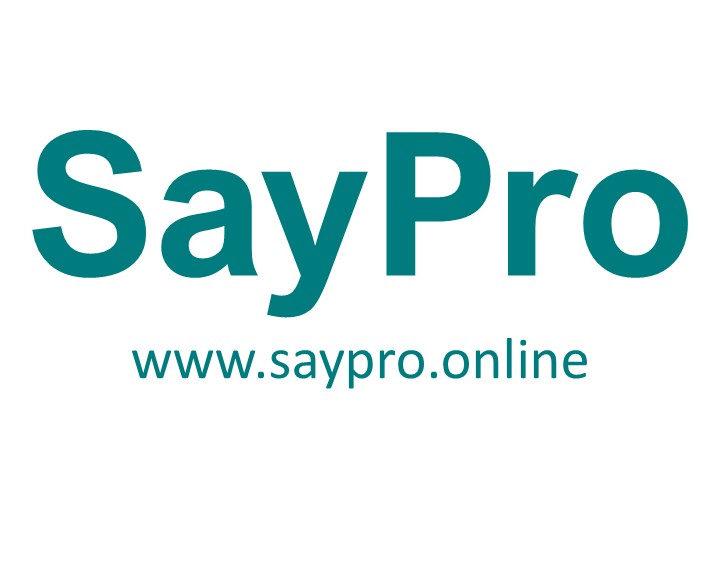SayPro Monthly January SCMR-5 SayPro Monthly Monthly Classified Map Integration: Integrate maps to display ad locations visually by SayPro Classified Office under SayPro Marketing Royalty SCMR
1. Introduction
This report outlines the research and selection process for mapping tools used in SayPro’s Monthly January SCMR-5 initiative. The goal was to identify the best mapping solutions for integration into SayPro Monthly Classified Map, ensuring accurate visual representation of ad locations. The document details the research process, the evaluation of different tools, and the rationale behind the final selection.
2. Research Methodology
The research for mapping tools was conducted using a structured approach:
- Market Analysis: Examined the leading mapping tools available in the industry.
- Feature Comparison: Compared core functionalities, including API support, customization, and data accuracy.
- Cost Evaluation: Assessed pricing models to determine cost-effectiveness.
- User Feedback: Considered reviews and case studies from businesses using similar mapping tools.
- Technical Feasibility: Ensured compatibility with SayPro’s existing classified platform.
3. Mapping Tools Considered
The following mapping solutions were analyzed:
3.1 Google Maps API
Pros:
- Highly accurate and widely used.
- Extensive documentation and developer support.
- Strong integration capabilities with classified ad platforms.
- Offers Street View and satellite imagery.
Cons:
- High costs associated with API usage beyond free tier.
- Dependency on Google’s ecosystem.
3.2 OpenStreetMap (OSM)
Pros:
- Free and open-source.
- Allows customization of map styles and data.
- Community-driven updates ensure continuous improvements.
Cons:
- Limited technical support compared to proprietary tools.
- Requires additional effort for customization and hosting.
3.3 Mapbox
Pros:
- High level of customization and styling.
- Strong integration capabilities for web and mobile.
- Competitive pricing compared to Google Maps API.
Cons:
- Requires more technical expertise for setup.
- Data updates might not be as frequent as Google Maps.
3.4 HERE Maps
Pros:
- Strong real-time data analytics features.
- Competitive pricing structure.
- Efficient route optimization capabilities.
Cons:
- Less adoption in classified ad platforms compared to Google Maps.
- Limited community-driven enhancements.
4. Final Selection Rationale
After evaluating all options, SayPro selected Google Maps API as the primary mapping tool for integration into SayPro Monthly Classified Map. The decision was based on the following criteria:
- Accuracy & Reliability: Google Maps provides the most comprehensive and up-to-date mapping data.
- Ease of Integration: Seamless API integration with SayPro’s classified ad system.
- User Experience: Familiarity among users enhances accessibility and usability.
- Scalability: Ability to handle large data sets as SayPro expands its classified ad listings.
5. Implementation Plan
The integration of Google Maps API will be carried out in the following phases:
- Development & Testing:
- Initial API integration into SayPro’s classified ad platform.
- Testing map performance and location accuracy.
- Customization & Optimization:
- Enhancing map display for a better user experience.
- Setting up cost-control measures to manage API usage.
- Launch & Monitoring:
- Rolling out the mapping feature across SayPro Monthly Classified.
- Continuous monitoring and gathering user feedback for improvements.
6. Conclusion
The selection of Google Maps API aligns with SayPro’s objective to provide an interactive and visually engaging classified ad platform. While cost considerations exist, the benefits of reliability, accuracy, and user familiarity outweigh the drawbacks. Future assessments will review the performance and cost-effectiveness of this solution to ensure optimal operation.
7. Approval & Sign-off
This report has been reviewed and approved by SayPro Classified Office under SayPro Marketing Royalty SCMR.
Prepared by: SayPro Classified Team
Date: [Insert Date]
Reviewed by: SayPro Marketing Royalty SCMR
Approved by: [Authorized Signatory]

